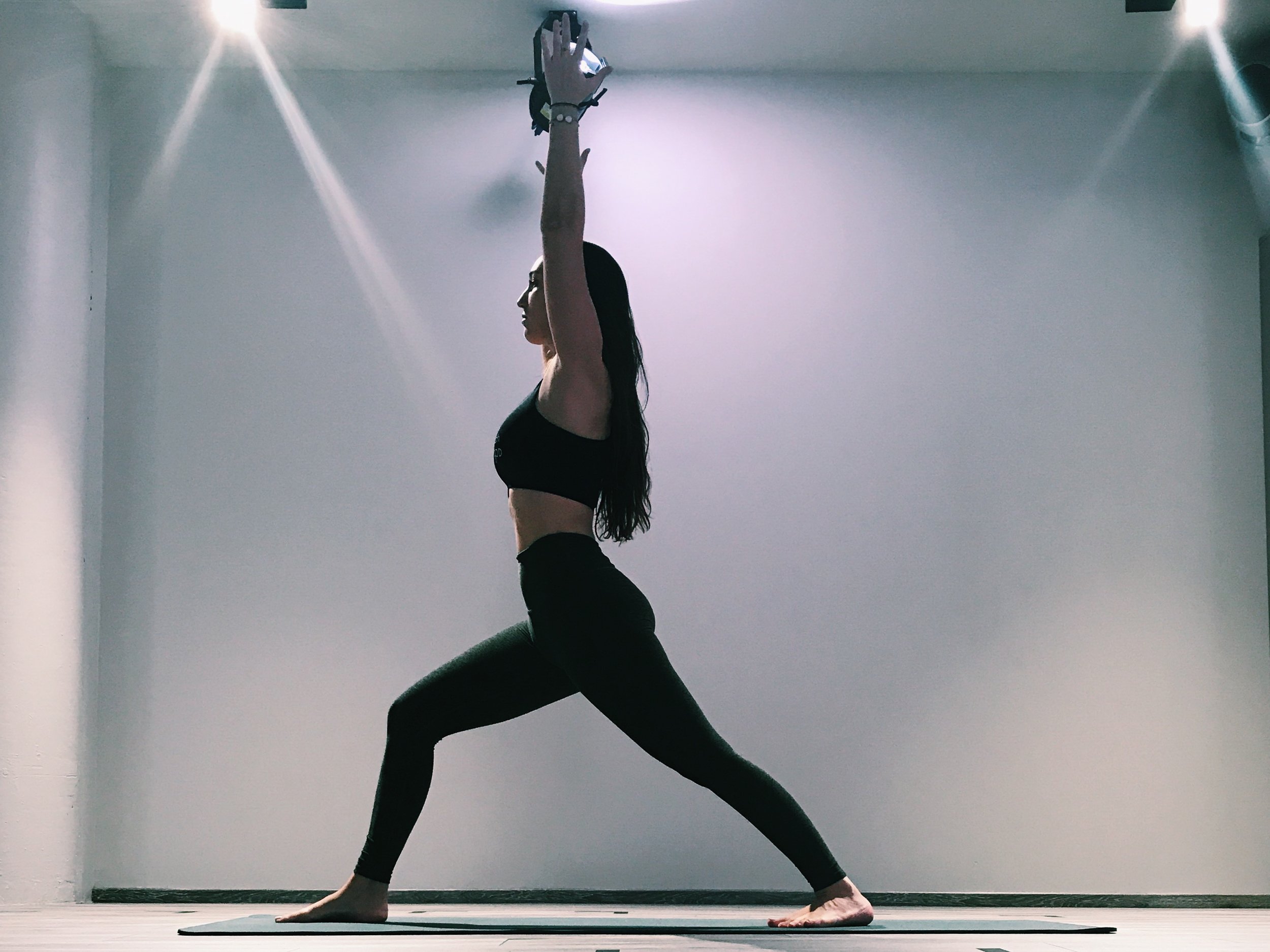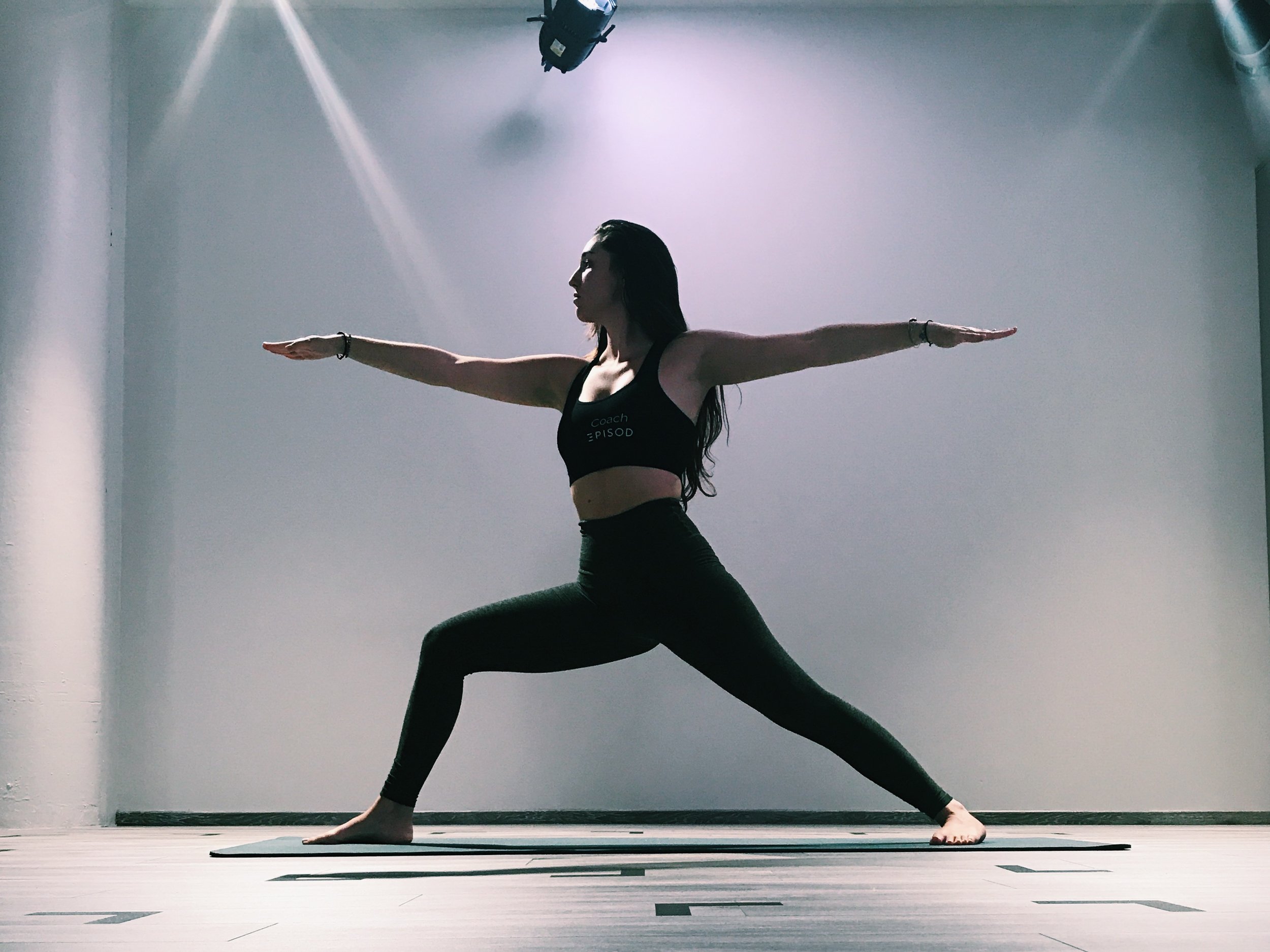The Story Behind Yoga's "Warrior" Poses
/Anyone who has step a foot in a Yoga class would have been told to hold a warrior, to move from cat to cow, or to lift into downward facing dog. Many of these poses find their names as their shapes resemble an animal or a function, but some have an actual story rooted in the Indian history and Hindu tradition.
Virabhadrasana or Warrior (I, II & III)
The myth of Virabhadrasana begins with Daksha, a powerful priest, who failed to invite his daughter Sati and her husband Shiva to a ritual sacrifice. Sati decided to go to the ceremony nonetheless but humiliated by her father, threw herself into the sacrificial fire and died.
When the news reached Shiva he was devastated, and out of rage tore out a lock of his hair an threw it into the ground. A powerful warrior named Virabhadra rose from the earth ready to fight for Shiva.
Sati’s husband sent him to destroy Daksha and the sacrifice, and after his revenge was accomplished retired into meditation to grieve. Later on, Sati is reborn and she and Shiva find love together again.
The pose Warrior I represents the Hero arriving at the ceremony with two swords in his hand. Warrior II represents the Hero focusing on his target and Warrior III represents the killing of Daksha with the two swords.
This story is a reminder that violence or revenge is never a way to reduce one’s pain, as Shiva was still mournful after murdering Daksha.
How to practice the Warrior Poses
Warrior 1
I am going to be fully honest here, and say that this posture is not my favourite and I only very rarely teach it in my classes. As a rule for your yoga practice, know that if a pose does not feel right in your body you can always modify it, or skip it.
You can enter Warrior 1 from downward facing dog, lifting your leg up and then bringing the foot in between your hands. Your front foot is facing forward, your back foot is on 45° angle, heel grounded. In the traditional alignment, we want our heels to be on the same line, and our hips to be facing forward. However, I've found in my personal practice and teaching, that for many this is impossible or very uncomfortable, and if that's the case for you, I encourage you to move your foot slightly to the side. You won’t have your heels exactly in line anymore, but squaring your hips might be much easier.
Our front leg is bent (be careful not to overextend your ankle), and the back leg is straight. Push the floor through the outer edge of your back foot for stability and balance your weight equally between both feet. Lengthen your spine and lift your arms overhead aligned with your ears. Try to keep the neck long and shoulders relaxed.
Enjoy a few breaths here
Warrior 2
A regular to most Yoga flows, Warrior 2 is a pose that strengthens your body, opens your hips and makes you feel strong and grounded.
Similarly to Warrior 1, you can begin from downward facing dog, lifting your leg up and carrying your leg over to place your foot in between your hands. Your front foot is facing forward and your back foot is at a 90° angle, heel grounded. Your front knee is bent and aligned with your ankle (always being careful not to overextend your ankle). Your back leg is straight, and you are pushing down the outer edge of your back foot for stability, balancing your weight equally between both feet. Lengthen your torso and engage your core by bringing the belly button in towards your spine. Arms and hands are strong and aligned with your legs. Relax the shoulders and neck, and keep your gaze forward.
Enjoy a few breaths here. For a challenge, you could try closing the eyes.
Warrior 3
This is a difficult pose, requiring balance, concentration, and strength. You can move from Warrior 1 to Warrior 3. You can also enter warrior 3 from Mountain Pose: bring your hands in Anjali mudra (prayer shape) in front of your heart center, engage your core by bringing the belly button in towards your spine, and with control start bringing your torso forwards and lifting your back leg up. You are aiming for a T shape, so torso and back leg parallel to the ground, hips square.
Remember here to keep your core well engaged, very important for the stability of any balancing posture. Your leg on the floor can be bent to start with and maybe as you feel stable you can gently straighten it. Flex your foot in the air to keep your back leg strong and keep your gaze stable, looking at something that is not moving.
Enjoy a few breaths here. For a challenge, you can straighten the arms in front of you, keeping them aligned with your ears. Be careful with this variation to keep a long spine and not ollapse into the back.
Enjoy!
Helen is a performer and a yoga teacher. She teaches Vinyasa Flow and Yin, in Paris and London, catered for busy city lifestyle people who need to reconnect with themselves in movement as well as in stillness. She will be leading a retreat this May in Italy. Find more about her work at www.helenwatkins.yoga and follow her yogic journey on instagram @LnWatkins






































